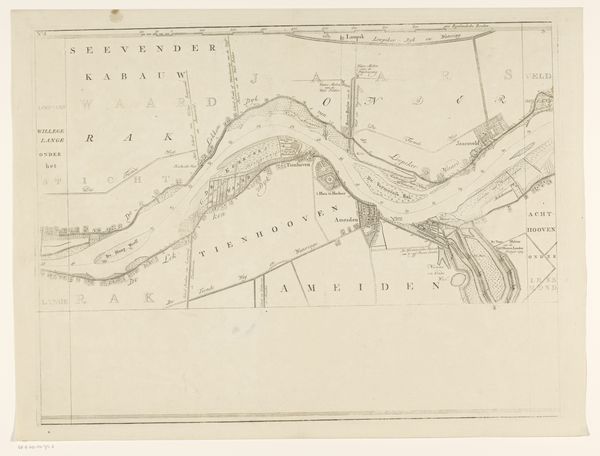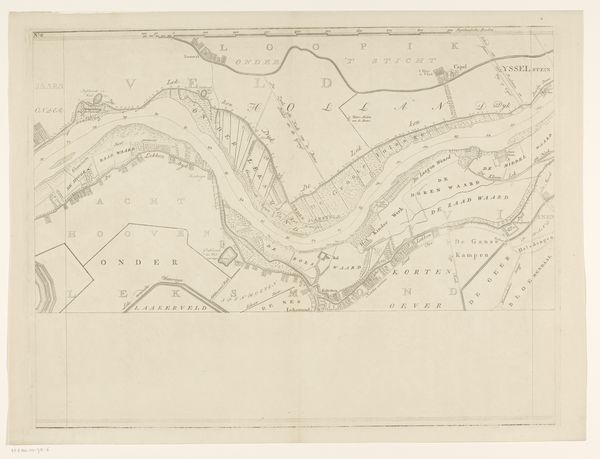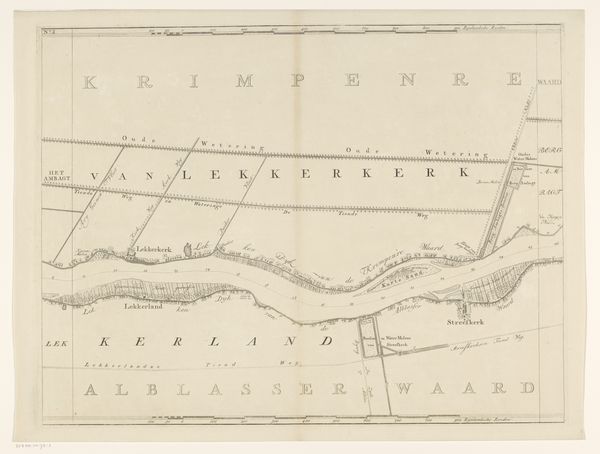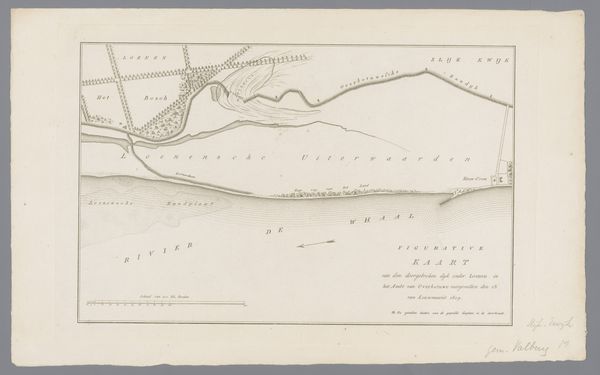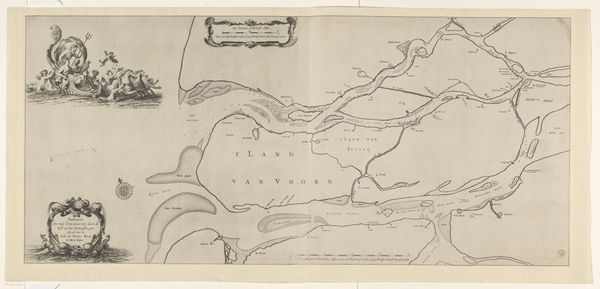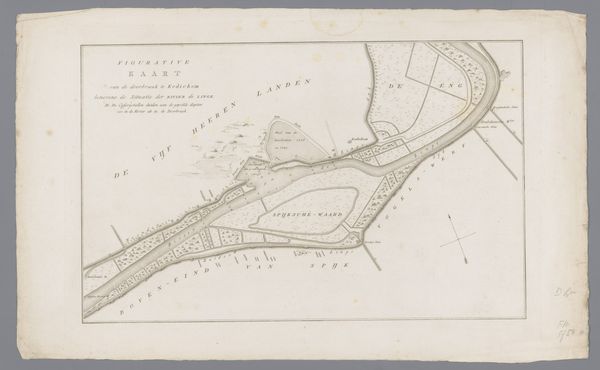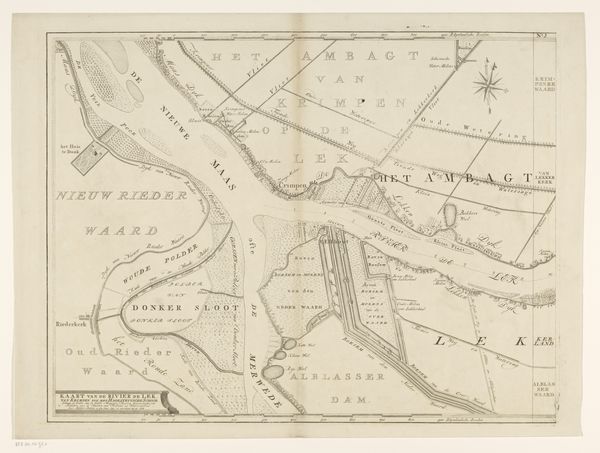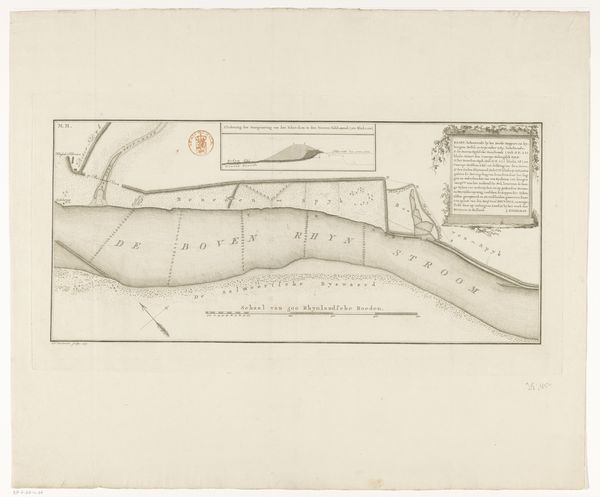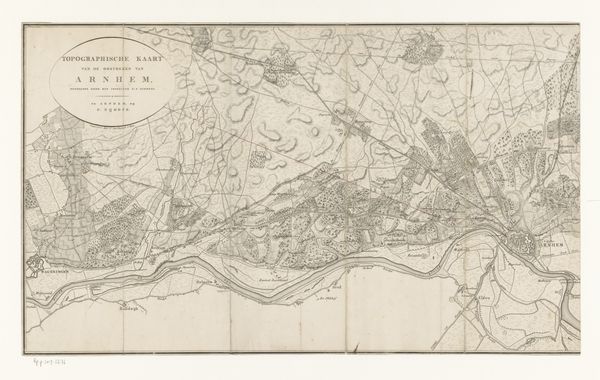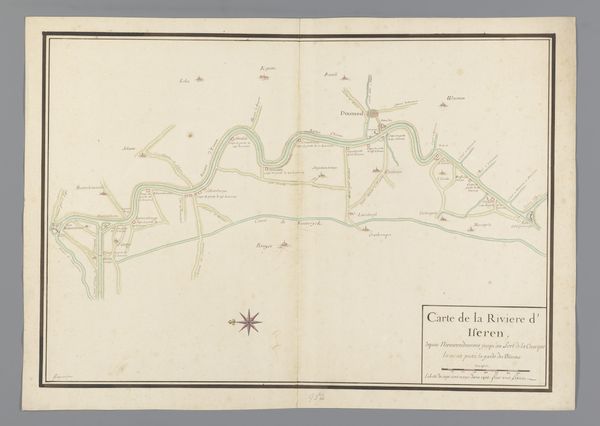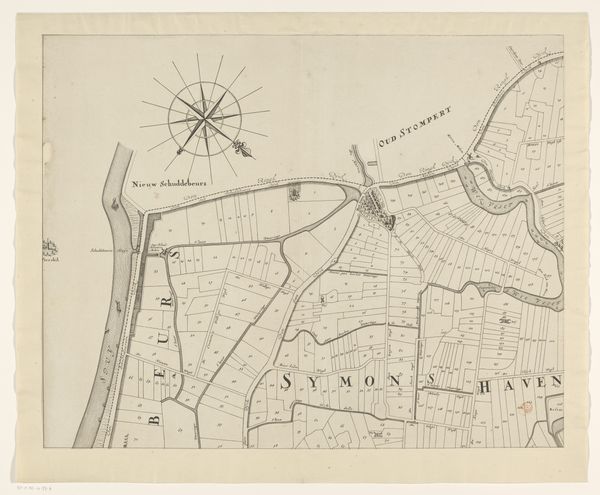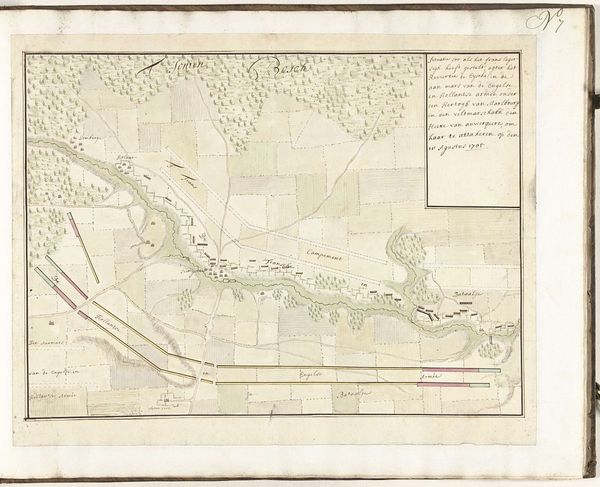
drawing, print, etching, engraving
#
drawing
# print
#
etching
#
landscape
#
river
#
etching
#
geometric
#
engraving
Dimensions: height 500 mm, width 658 mm
Copyright: Rijks Museum: Open Domain
Editor: This is the “Kaart van de rivier de Lek (derde deel)”, or "Map of the Lek River (third part)," created between 1764 and 1765 by Isaak Tirion. It’s a detailed drawing and print, made using etching and engraving. It has a kind of muted, documentary feel to it. What aspects of this map stand out to you? Curator: For me, this map screams process. Consider the labour involved in surveying the land, transferring that data, engraving the metal plate, and finally, printing. It's not just about geography; it's about production and material intervention on landscape and representation of the real as an owned artefact. Editor: So you're focusing on the physical effort and the choices in material… Curator: Exactly. Look at the very deliberate use of engraving. Why choose that technique over others? It speaks to a need for precision and reproducibility, essential for something like this but with material repercussions; the labour of this thing matters to its context and purpose. Who was the intended consumer and their relationship with material? Editor: Someone who needs very specific information... possibly for trade or transport, or, owning the river? Curator: Precisely! Who benefits from the river being so meticulously mapped and controlled through this representation? Are all people equally included in the landscape shown here? Consider also: does the choice of "art" material raise this out of a working diagram? How might this map affect those who live along the river but aren’t landowners, like laborers? It prompts questions about power, resources, and representation. Editor: I hadn’t thought of it that way – the map itself almost becomes a tool of control through the physical demands of making it. It does bring another layer to the relationship to those waterways. Curator: Exactly, it is important to think critically about whose vision is presented, whose work brought this thing into existence, and for what purpose, given the historical implications. Editor: This has given me a new way to understand art as related to a place.
Comments
No comments
Be the first to comment and join the conversation on the ultimate creative platform.
